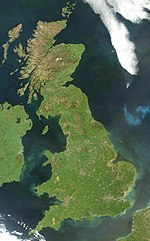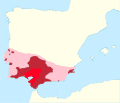Celts (category CS1 German-language sources (de))
the Celts with the Iron Age Hallstatt culture which followed it (c. 1200–500 BC), named for the rich grave finds in Hallstatt, Austria, and with the following...
146 KB (16,575 words) - 12:40, 17 May 2024
to the Central European Urnfield culture (c. 1300–750 BC) and Celtic Hallstatt culture that succeeded the Urnfield culture. It is not possible to tell...
18 KB (1,527 words) - 01:23, 19 May 2024
Golasecca culture (redirect from Cultura di Golasecca)
Age, with a likely Celtic substratum given the similarities with the Hallstatt culture. He made several trips there bringing back to France part of the...
20 KB (2,182 words) - 22:30, 7 April 2024
in common with Hallstatt-Celtic skulls from North Bavaria and Baden-Württemberg but rather with Hallstatt-Celtic skulls from Hallstatt in Austria. Compared...
100 KB (10,734 words) - 17:32, 27 May 2024
Iron Age Europe (category CS1 German-language sources (de))
while in Central Europe the Urnfield culture had already given way to the Hallstatt culture. In north Italy the Villanovan culture is regarded as the start...
32 KB (4,196 words) - 19:16, 2 June 2024
Castro culture (Galician: cultura castrexa, Portuguese: cultura castreja, Asturian: cultura castriega, Spanish: cultura castreña, meaning "culture of...
54 KB (5,793 words) - 02:08, 9 June 2024
Dacian bracelets (category CS1 German-language sources (de))
Late Bronze Age and Hallstatt phases. Bronze bracelet dated to Bronze Age – found at Gușterița, Sibiu County 12th-century BC (Hallstatt A1) Bronze Age bracelets...
138 KB (15,248 words) - 23:59, 1 June 2024
was completely new to the area and was a typical example of the western Hallstatt culture. The name comes from the locality of Canegrate in Lombardy, south...
13 KB (1,455 words) - 07:57, 8 April 2024
in common with Hallstatt-Celtic skulls from North Bavaria and Baden-Württemberg but rather with Hallstatt-Celtic skulls from Hallstatt in Austria. Compared...
81 KB (10,469 words) - 05:59, 3 June 2024
Albanoid (category CS1 German-language sources (de))
28 Thorsø 2019, p. 258. Baldi, Benedetta; Savoia, Leonardo M. (2017). "Cultura e identità nella lingua albanese" [Culture and Identity in the Albanian...
32 KB (3,155 words) - 03:32, 19 May 2024
Evolution of languages (category Articles with German-language sources (de))
BCE is believed to be the first Proto-Celtic culture followed by the Hallstatt culture in Austria in 800 BC. Celtic languages spread throughout Central...
120 KB (14,558 words) - 21:58, 10 April 2024
generally accepted view that Celtic originated in the context of the Hallstatt culture, since 2009, John T. Koch and others have proposed that the origins...
76 KB (7,522 words) - 10:53, 31 May 2024
standard's head, symbolic animal of the Carpathian people since the phase B of Hallstatt Period (10th–8th century BC). The animal is shown in an aggressive posture...
31 KB (3,587 words) - 09:55, 2 May 2024
culture to the Central European Urnfield culture (c. 1300–750 BC), and Hallstatt culture (which succeeded the Urnfield culture). The Villanovans were initially...
34 KB (3,959 words) - 16:35, 27 April 2024
that the Celtic languages derive their origins from the more easterly Hallstatt culture. By the time of the Roman invasion of Britain the area of modern...
220 KB (21,926 words) - 10:16, 9 June 2024
Nemetobriga (A Pobra de Trives – Ourense), which was the religious center. The Astures may have been part of the early Hallstatt expansion that left the...
18 KB (2,315 words) - 05:07, 7 June 2024
Anschluss (category CS1 German-language sources (de))
City: Fondo de Cultura Económica. 2000. pp. 112–113. ISBN 968-16-6049-8. In Spanish. Kloyber, Christian: "Don Isidro Fabela: 50 años después de muerte. Recuerdo...
104 KB (9,218 words) - 13:36, 7 June 2024
Tartessian language (category CS1 German-language sources (de))
internacional de lenguas y culturas prerromanas de la Península Ibérica (Valencia, 24-27 de octubre de 2012) (Palaeohispanica 13), pp. 323–345. Hoz, Javier de (1995):...
27 KB (3,007 words) - 21:53, 14 May 2024
working 1250–1125 BC – Transition to Iron Age: Uioara de Sus 1200–500 BC – Early Iron Age/Hallstatt culture : Ferigile 1150 BC – Gârla Mare culture ends...
45 KB (4,370 words) - 00:07, 29 July 2023
Southern Iberian and Celtiberian cultures, and from central-western Europe (Hallstatt and, to a lesser extent, La Tène culture), and from the Mediterranean...
25 KB (2,876 words) - 15:29, 18 May 2024
Austria-Hungary (category CS1 German-language sources (de))
"Transilvania" (PDF). Asociația Transilvană Pentru Literatura Română și Cultura Poporului Român (in Romanian): 3–9. Archived (PDF) from the original on...
161 KB (17,491 words) - 17:02, 8 June 2024
Timeline of Vienna (category CS1 German-language sources (de))
KZ-Gedenkstätte Mauthausen. Retrieved 8 August 2022. "Istituto italiano di Cultura di Vienna: La storia" (in Italian). Retrieved 31 July 2022. Film and Television...
32 KB (2,765 words) - 19:10, 12 March 2024
rampart can be dated to the Cruceni-Belegis¸ IIA phase (equivalent to Hallstatt A1). The Cruceni-Belegis culture is part of the south-east European Urnfield...
14 KB (1,397 words) - 22:34, 25 February 2024
to Las Cogotas. Historia de Castilla y León. 1. La prehistoria del Valle del Duero, Valladolid, 1985. G. Delibes. La Cultura de las Cogotas I, Actas del...
11 KB (753 words) - 19:29, 2 June 2024
2307/456649. JSTOR 456649. "Ditzionàriu in línia de sa limba e de sa cultura sarda, Regione Autònoma de sa Sardigna". Archived from the original on 2017-10-08...
172 KB (16,441 words) - 16:46, 30 May 2024
Prehistory of Transylvania (redirect from Suciu de Sus culture)
contained two large deposits dating from the same short range of time (Hallstatt A1). Uioara de Sus, accidentally found in 1909, contained 5,827 items weighing...
81 KB (10,675 words) - 11:59, 14 February 2024
30: 77–90. ISSN 1989-4104. Lull, Vicente (1983). "La cultura del Argar. Un modelo para el estudio de las formaciones económico-sociales prehistóricas" (PDF)...
11 KB (1,108 words) - 00:42, 5 June 2024
May 2010.. Journal renamed to Palaeohispanica: Revista sobre lenguas y culturas de la Hispania Antigua. This particular work has also been published in...
11 KB (1,154 words) - 12:27, 8 April 2024
salt mine in Hallstatt. Culturas precolombinas de Chile, 1954 Peine, un pueblo atacameño, 1954 Los museos de Chile , 1975 Prehistoria de Chile , 1971...
5 KB (441 words) - 16:22, 23 March 2024
culture, which had strong similarities with the Celtic-speaking cultures of Hallstatt and La Tène. The Umbrian necropolis of Terni, which dates back to the...
16 KB (1,912 words) - 06:17, 1 June 2024





















